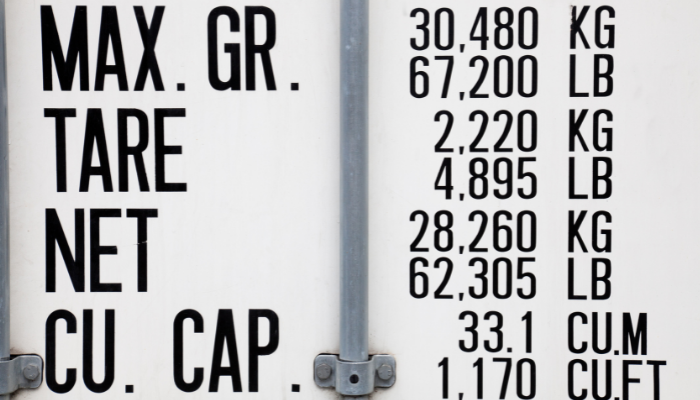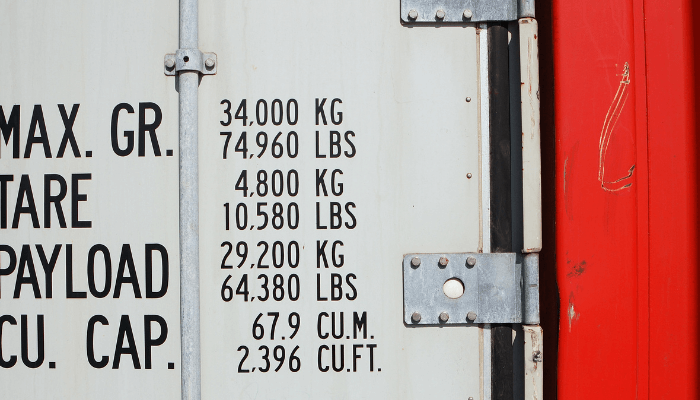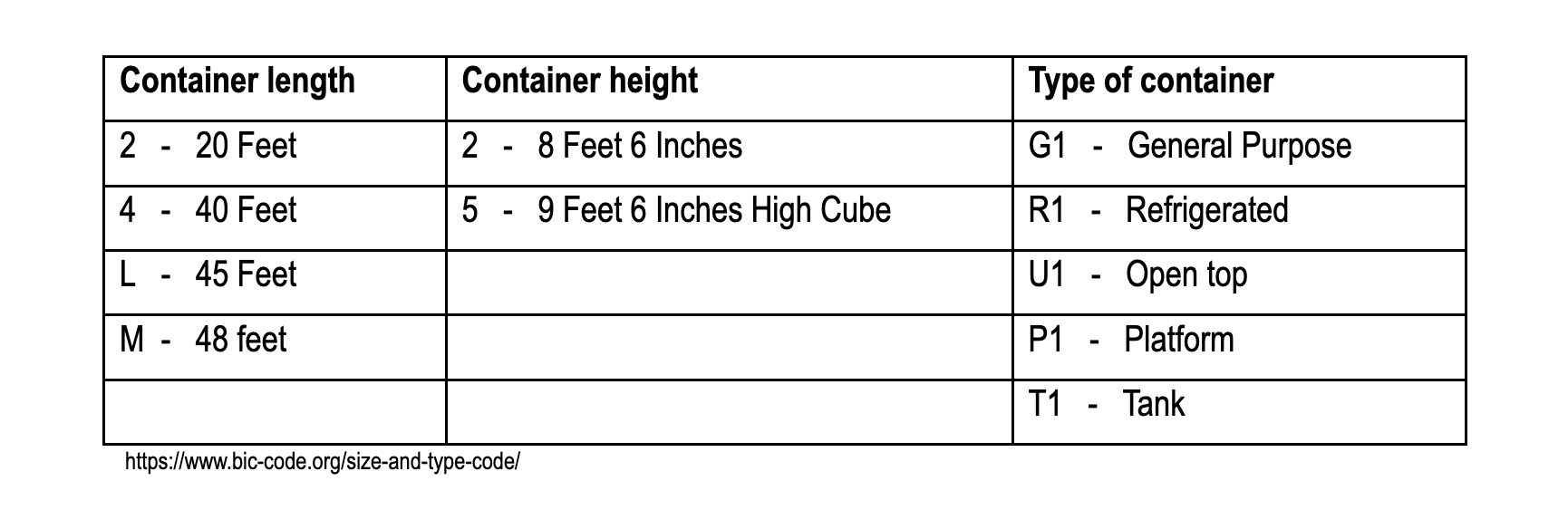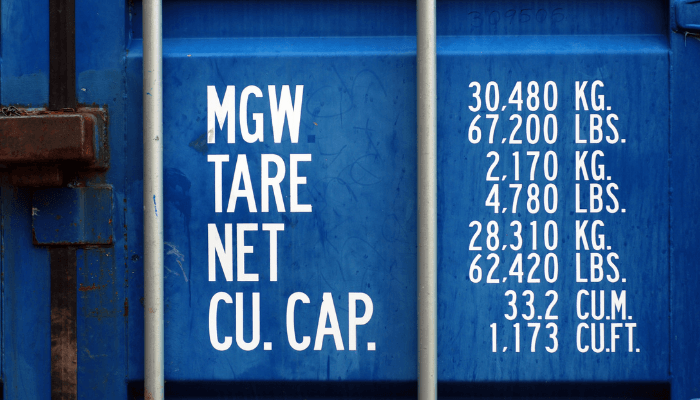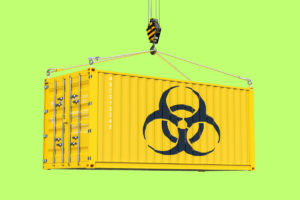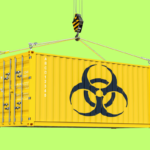Understanding Shipping Container Numbers
Currently, the container capacity of 5 of the world’s major players in container transport is estimated at 16.4 million TEUs (Twenty Equivalent Units). More than 90% of global cargo is transported by multimodal containers.
Considering the number of containers that are in circulation around the world, to transport about 2 billion tons of cargo annually, how does one keep track of their whereabouts? How are containers identified, tracked, and accounted for?
Unique identifiers known as container number or container identification number is assigned to every container that is used for the transport and storage of cargo. It is used as the reference for all commercial and legal purposes as far as the container or consignment is concerned.
These numbers assigned by the ISO (International Standards Organization) through BIC (Bureau International des Containers), under ISO 6346:1995 E, are made up of 4 letters followed by 7 numbers. Each container number is unique. Some examples of container numbers are:
- MSCU5285725
- HLXU2008419
- TLLU5146210
The ISO and BIC
The ISO is an internationally recognized non-governmental body based in Geneva, Switzerland for setting international standards. BIC, on the other hand, has been appointed by the ISO as the global container prefix registry.
The BIC is a non-profit organization that aims to promote safety and security in the field of container transport. The BIC also maintains a container facility code registry that identifies each facility that is involved in the container industry, on a geographical basis.
The unique alpha-numeric container number is mainly displayed on the top right part of the container door along with other details. It may also appear on all sides of the container except the base so that MHE (Material Handling Equipment) operators can identify the container easily.
The container number appears on the container in other places too.
The CSC Plate and the Combined Data Plate
It is mandatory for each container to have the CSC (Convention for Safe Containers) plate on it. This is a small, rectangular, non-corrosive, and fire-proof plate fixed on the door of a container. It shows technical data of the container and details of tests it has undergone, under the heading ‘CSC Safety Approval’ in bold.
Some containers may have a Combined Data Plate that includes several other data regarding the container, besides the details of the CSC plate. Some of the details shown on a Combined Data Plate are:
- Country of approval
- Approval certificate number
- Manufacturer’s name and address
- Container model
- Container number
- Date of manufacture
- Maximum gross weight
- Racking test details
- Pest control treatment on timber components of the container
- Periodic container examination scheme number
A convention for container safety was held in 1972, jointly by the UN (United Nations) and the IMO (International Maritime Organization). This came to be known as the Convention for Safe Containers (1972).
The CSC 1972 sets forth test procedures for establishing the strength of containers that is necessary for the safety of humans operating such equipment as well as for the durability of the containers.
Breaking up a Container Number
The methodology followed by BIC for framing a container number is as follows:
- The first three letters: Code to show the owner of the container (Owner code)
- The fourth letter: Identifies the equipment (Product group code) *
- The first 6 numbers: A unique serial number given by the owner of the container
- The last number: Check digit **
* The equipment identifier (fourth letter in the container number) can be one of these letters in the capital case:
- U: All freight containers
- J: Equipment related to freight containers that may be detached
- Z: Trailers or chassis
** The check digit is a method of validating the owner code (first three letters) and serial number (first six numbers). This is normally shown within a box to separate it from the serial number.
The container number MSCU5285725 may be broken up thus:
The owner code of the container number is approved by the BIC after verification.
In the example of container numbers given above, MSCU is of Mediterranean Shipping Company (MSC), HLXU of Hapag Lloyd, and TLLU of Triton Containers International Limited.
Most containers display the distinct logo of the company that owns the container.
Size and Type Code
Having examined the container number, now, what is the 4-lettered code that appears right underneath it on the container door? This code called the Size and Type Code may consist of letters or numbers and it contains the dimensional information of the container.
The first character shows the container’s length while the second shows its height. The last two characters denote the type of container; whether a general-purpose dry container, refrigerated container, open-top, platform, or tank container.
The BIC-issued types and sizes chart used for the Size and Type codes is shown here for reference:
Other Operational Markings
A container will also have other operational markings on it. These include:
- Gross weight: The maximum weight of the loaded container
- Tare weight: The weight of the empty container
- Net weight: Gross weight minus the Tare weight (also called the Payload)
- Max Cargo Vol: The maximum cargo volume that can be carried in the container
The identification system using container numbers is used internationally for tracking containers as well as in shipping documents such as the bill of lading, packing list, invoice, etc. A consignment may be a single container or it may consist of several containers. All the container numbers are shown on the bill of lading while each container will have its separate packing list.
The container numbers are used in communication between the seller, buyer, transporter, government agencies, or any other party who may be part of the transaction. Most cargo tracking apps use the container number to track and trace the current location of their cargo.
You might also like to read:
- Understanding the CSC Plate Of Shipping Containers
- How Are Shipping Containers Made?
- What Are Insulated Shipping Containers?
- What is Stuffing and Destuffing of Shipping Containers?
- Watch: How Container Shipping Works – The Process Of Transporting Cargo In Containers
Disclaimer: The authors’ views expressed in this article do not necessarily reflect the views of Marine Insight. Data and charts, if used, in the article have been sourced from available information and have not been authenticated by any statutory authority. The author and Marine Insight do not claim it to be accurate nor accept any responsibility for the same. The views constitute only the opinions and do not constitute any guidelines or recommendation on any course of action to be followed by the reader.
The article or images cannot be reproduced, copied, shared or used in any form without the permission of the author and Marine Insight.
Do you have info to share with us ? Suggest a correction

About Author
Hari Menon is a Freelance writer with close to 20 years of professional experience in Logistics, Warehousing, Supply chain, and Contracts administration. An avid fitness freak, and bibliophile, he loves travelling too.
Latest Maritime law Articles You Would Like:
Latest News
- What are Logistics Risks?
- How Port and Terminal Operators Can Control Emissions?
- Minimum Quantity Commitment (MQC) and Liquidated Damages in Container Shipping: Concept and Relevance
- MARPOL (The International Convention for Prevention of Marine Pollution For Ships): The Ultimate Guide
- The Ultimate Shipping Container Dimensions Guide
- A Comprehensive Overview of IMDG Code for Shipping Dangerous Goods
Subscribe To Our Newsletters
By subscribing, you agree to our Privacy Policy and may receive occasional deal communications; you can unsubscribe anytime.



